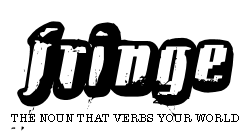Dear Writer's Block,
I've tried everything: changing my atmosphere, hosting writing workshops on my porch, reading, doodling, listening to the radio, book clubs, events, and writing (gasp). The change in atmosphere only creates a drifting mind and, when applicable, intense sessions of people-watching and inner dialogue. Writing workshop turns into a wine manifesto, events are fun but mindless, and writing turns into illegible babble.
What else can I do, Writer's Block?
Buy a typewriter, you say? Why yes, a quaint typing machine that clicks and clacks should do the trick. A vintage toy that makes the sweetest of sounds, is irresistible to touch and impossible to ignore. Typewriters don't have Facebook or Google. Typewriters don't have iTunes or colorful, distracting screens. Typewriters help you get right to the point ... Write. To. The. Point.
Thank you, Writer's Block, for understanding. I'm currently waiting, rather impatiently, to pick up a vintage Underwood - the kind that Kerouac once used. My fingers eagerly await their unborn masterpiece.
Yours truly,
Alexandra
P.S For more information on typewriters and which authors used what, click here. Joan Didion used a Royal KMM, William Faulker used an Underwood, and Joyce Carol Oates used an SCM Smith Corona Electra. The site also directs you to your nearest typewriter store. Fingers, rejoice!





1 comment:
What a fantastic idea! I'm jealous.
Post a Comment